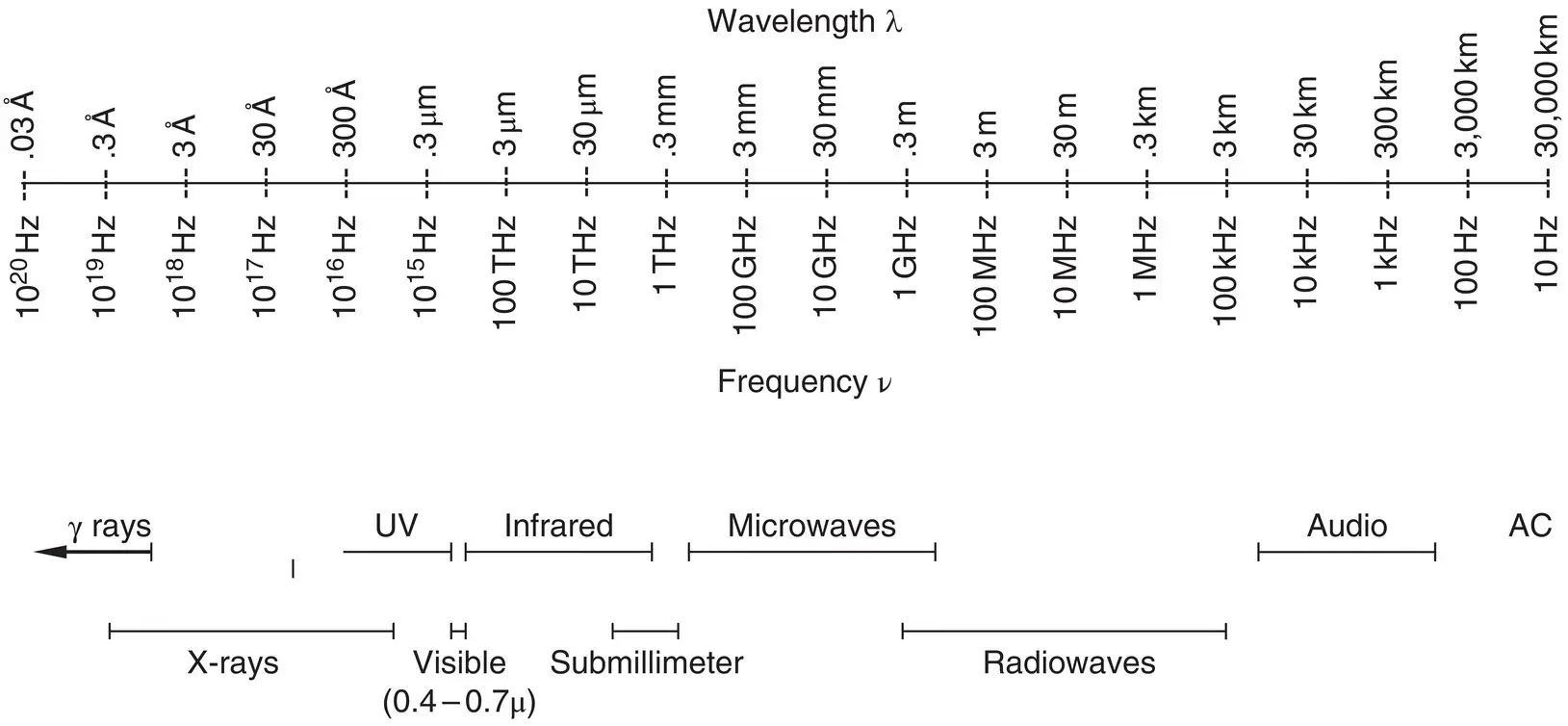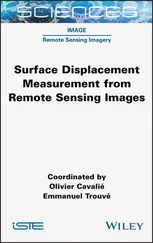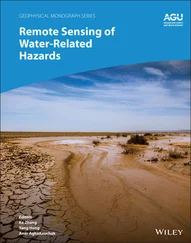1 ...8 9 10 12 13 14 ...19 At radio frequencies below 10 MHz, the Earth’s ionosphere blocks any transmission to or from the surface. In the rest of the radio frequency region, up to the low microwave (10 GHz), the atmosphere is effectively transparent. In the rest of the microwave region, there are a number of strong absorption bands, mainly associated with water vapor and oxygen.
In the submillimeter and far‐infrared region, the atmosphere is almost completely opaque, and the surface is invisible. This opacity is due mainly to the presence of absorption spectral bands associated with the atmospheric constituents. This makes the spectral region most appropriate for atmospheric remote sensing.
The opacity of the atmosphere in the visible and near infrared is high in selected bands where the high absorption coefficients are due to a variety of electronic and vibrational processes mainly related to the water vapor and carbon dioxide molecules. In the ultraviolet, the opacity is mainly due to the ozone layer in the upper atmosphere.
The presence of clouds leads to additional opacity due to absorption and scattering by cloud drops. This limits the observation capabilities in the visible, infrared, and submillimeter regions. In the microwave and radio frequency regions, clouds are basically transparent.
In the case of the other planets, more extreme conditions are encountered. In the case of Mercury, the Moon, asteroids, comets, and Pluto, no significant atmosphere exists, and the whole electromagnetic spectrum can be used for surface observation. In the case of Venus and Titan, the continuous and complete cloud, or haze, coverage limits surface observation to the longer wavelength regions, particularly radio frequency and microwave bands. In the case of Mars, the tenuous atmosphere is essentially transparent across the spectrum even though a number of absorption bands are present. In the case of the giant planets, the upper atmosphere is essentially all that can be observed and studied remotely with some deeper access from emitted microwave radiation.
References and Further Reading
1 Bracalante, E. M., et al. The SASS scattering coefficient algorithm. IEEE Journal of Oceanic Engineering OE‐5, 145–153, 1980.
2 Chahine, M., et al. Interaction mechanisms within the atmosphere, Chapter 5. In Manual of Remote Sensing. American Society of Photogrammetry, Falls Church, VA, 1983.
3 Colwell, R. N. (Ed.). Manual of Remote Sensing. American Society of Photogrammetry, Falls Church, VA, 1983.
4 Kramer, H. J. Observation of the Earth and its Environment – Survey of Missions and Sensors. Springer‐Verlag, Berlin, Germany, 2002.
5 Liu, C. T. Tropical Pacific sea surface temperatures measured by Seasat microwave radiometer and by ships. Journal of Geophysical Research, 88, 1909–1916, 1983.
6 Townsend, W. F. The initial assessment of the performance achieved by the Seasat radar altimeter. IEEE Journal of Oceanic Engineering, OE‐5, 80–92, 1980.
7 Waters, J., et al. Remote sensing of atmospheric temperature profiles with the Nimbus 5 microwave spectrometer. Journal of the Atmospheric Sciences, 32(10), 1953–1969, 1975.
2 Nature and Properties of Electromagnetic Waves
2.1 Fundamental Properties of Electromagnetic Waves
Electromagnetic energy is the means by which information is transmitted from an object to the sensor. Information could be encoded in the frequency content, intensity, or polarization of the electromagnetic wave. The information is propagated by electromagnetic radiation at the velocity of light from the source directly through free space, or indirectly by reflection, scattering, and reradiation to the sensor. The interaction of electromagnetic waves with natural surfaces and atmospheres is strongly dependent on the frequency of the waves. Waves in different spectral bands tend to excite different interaction mechanisms such as electronic, molecular, or conductive mechanisms.
2.1.1 Electromagnetic Spectrum
The electromagnetic spectrum is divided into a number of spectral regions. For the purpose of this text, we use the classification illustrated in Figure 2.1.
The radio band covers the region of wavelengths longer than 10 cm (frequency less than 3 GHz). This region is used by active radio sensors such as imaging radars, altimeters, and sounders, and, to a lesser extent, passive radiometers.
The microwave band covers the neighboring region, down to a wavelength of 1 mm (300 GHz frequency). In this region, most of the interactions are governed by molecular rotation, particularly at the shorter wavelengths. This region is mostly used by microwave radiometers/spectrometers and radar systems.
The infrared band covers the spectral region from 1 mm to 0.7 μm. This region is sometimes subdivided into subregions called submillimeter, far infrared, thermal infrared, and near infrared. In this region, molecular rotation and vibration play an important role. Imagers, spectrometers, radiometers, polarimeters, and lasers are used in this region for remote sensing. The same is true in the neighboring region, the visible region (0.7–0.4 μm) where electronic energy levels start to play a key role.
In the next region, the ultraviolet (0.4 μm to 300 Å), electronic energy levels play the main role in wave–matter interaction. Ultraviolet sensors have been used mainly to study planetary atmospheres or to study surfaces with no atmospheres because of the opacity of gases at these short wavelengths.
X‐rays (300–0.3 Å) and gamma rays (shorter than 0.3 Å) have been used to an even lesser extent because of atmospheric opacity. Their use has been limited to low‐flying aircraft platforms or to the study of planetary surfaces with no atmosphere (e.g., Moon).

Figure 2.1 Electromagnetic spectrum.
2.1.2 Maxwell’s Equations
The behavior of electromagnetic waves in free space is governed by Maxwell’s equations:
(2.1) 
(2.2) 
(2.3) 
(2.4) 
(2.5) 
(2.6) 
where
E = electric vector
D = displacement vector
H = magnetic vector
B = induction vector
μ0, ∈0 = permeability and permittivity of vacuum
μr, ∈r = relative permeability and permittivity
∇. = divergence
∇x = curl
Maxwell’s concept of electromagnetic waves is that a smooth wave motion exists in the magnetic and electric force fields. In any region where there is a temporal change of the electric field, a magnetic field appears automatically in that same region as a conjugal partner and vice‐versa. This is expressed by the above coupled equations.
2.1.3 Wave Equation and Solution
Читать дальше



















